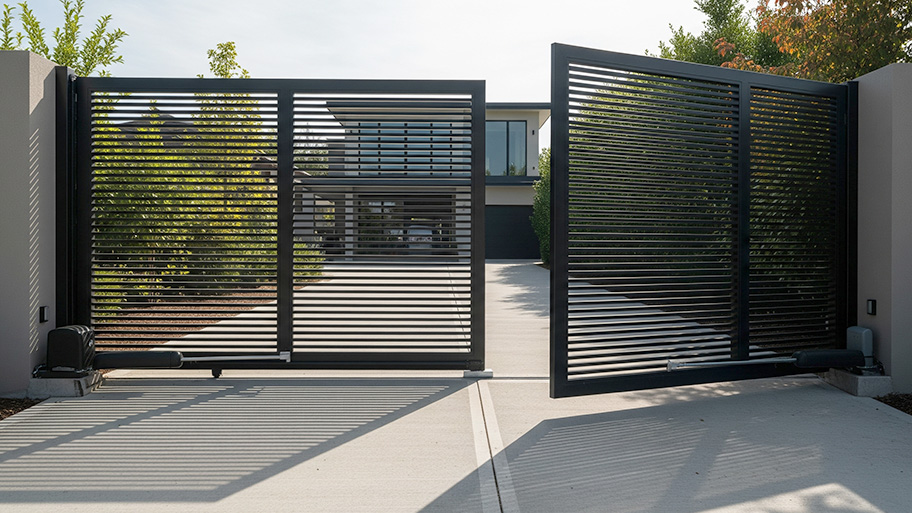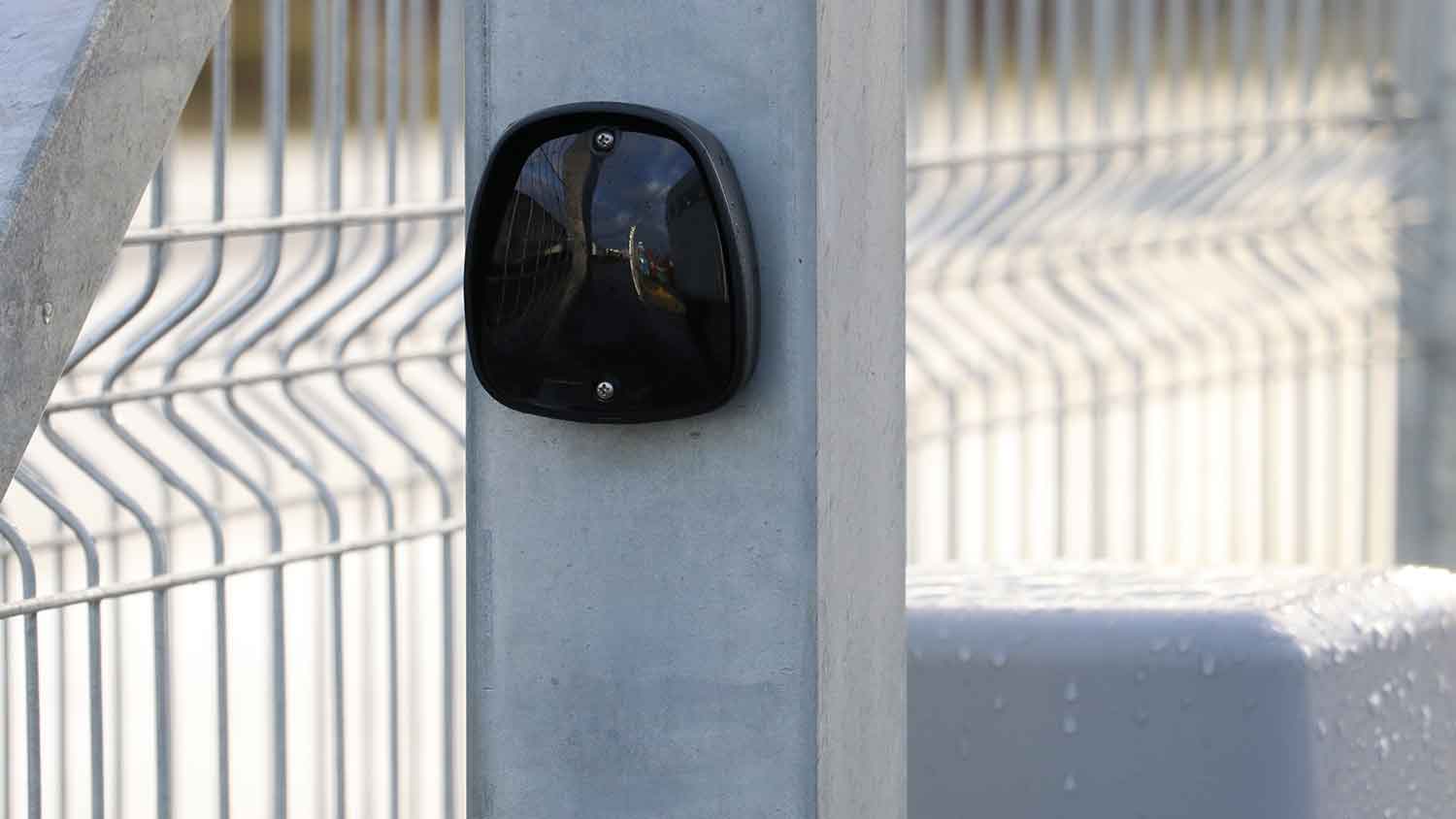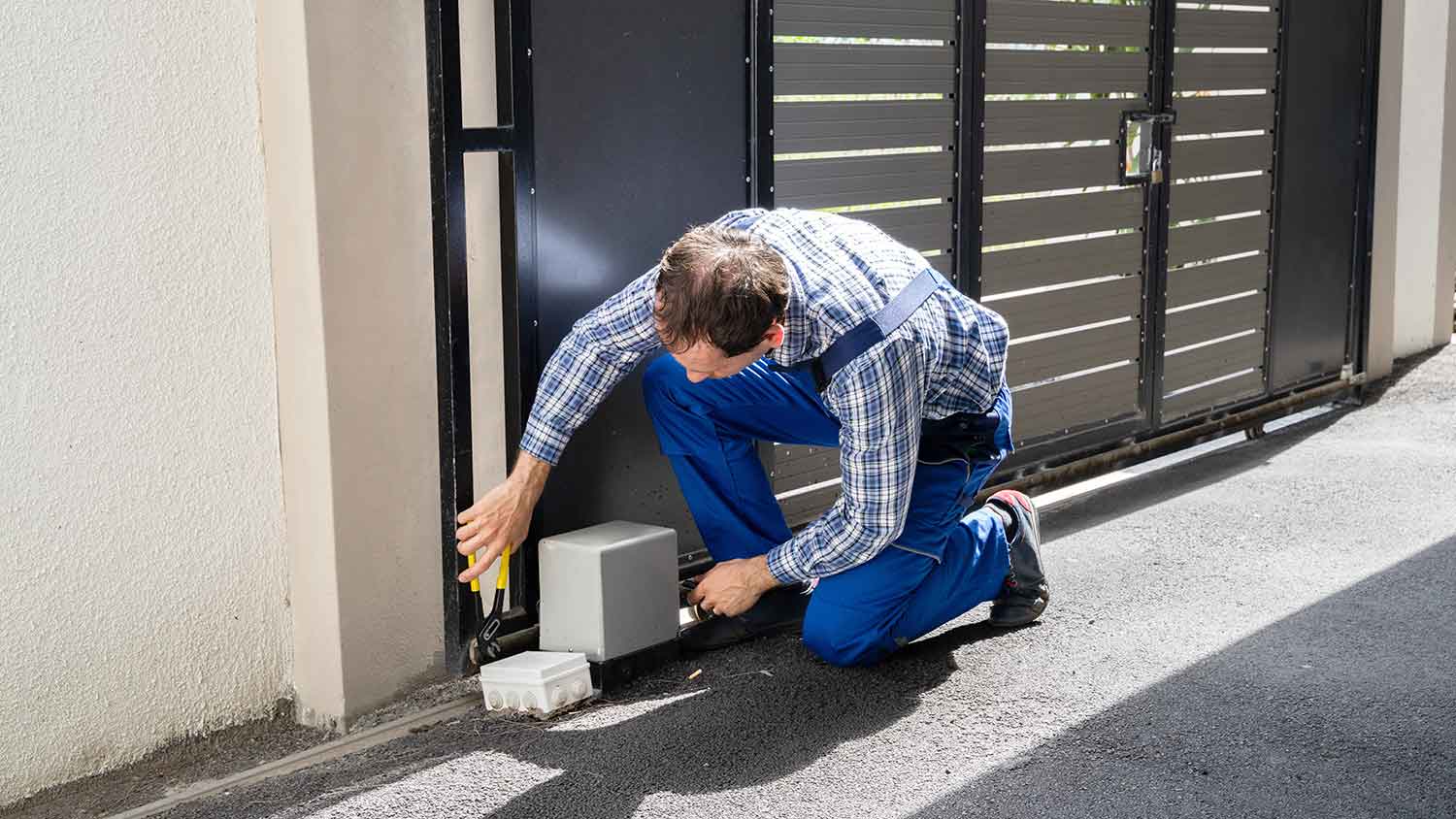
Discover the average automatic gate installation cost, key price factors, and ways to save. Get expert tips for homeowners planning a new automatic gate.
Behind the scenes of seamless home entry


The track and wheels work cohesively to slide open this automatic gate.
Automatic gate repair costs between $550 and $1,480.
Essential safety features reduce the risk of injury and damage.
Sliding gate installation and repair are best handled by professionals.
Sliding gates, one of the most popular types of automatic gates, offer both functionality and aesthetics to homes. Understanding all the parts of a sliding gate is helpful for anyone considering their installation or maintenance. From the robust gate panels to the mechanisms of the gate operator, each part plays a vital role in ensuring smooth operation.
Driveway gates add value and security to your home. To maximize your ROI, consider contacting a pro for this project.


Gate panels are movable sections that open and close to allow or restrict access. They’re made of sturdy materials like metal or wood and come in various sizes and designs. The panels are carefully crafted to withstand outdoor conditions and mechanical stress to ensure longevity and reliable operation.
The panels are attached to the gate track through wheels or rollers mounted at the bottom, allowing them to slide horizontally along the designated path when activated by the motor. Proper alignment and smooth movement of the panels are essential for the gate to function. The panels may feature reinforcement structures to enhance durability and security, especially in larger or heavier gate configurations.

The track provides the pathway along which the gate panels move to open and close. Usually made of durable materials such as steel or aluminum, the track is installed either on the ground or along a support structure, depending on the specific configuration of the gate. It’s designed to withstand the weight and movement of the gate panels.
The track features a smooth surface and precise alignment to facilitate the seamless movement of the gate panels. It may include guide channels or grooves to keep the wheels or rollers on the gate panels properly aligned as they slide along the track. The track is often reinforced and securely anchored to the ground or support structure to stabilize and prevent misalignment.

Wheels provide the mechanism for the gate panels to move along the track smoothly and efficiently. The wheels are mounted either directly onto the gate panels or onto brackets attached to the panels. The wheels roll along the gate track, guided by its structure, allowing the gate to open and close easily.
The design and quality of the wheels directly impact the performance and longevity of the sliding gate system. High-quality wheels with precision bearings ensure smooth operation and reduce wear on both the wheels and the track. Some advanced sliding gate systems may feature adjustable wheels to accommodate track or gate alignment variations.

Similar to wheels, rollers, sometimes called brackets, are placed on the top or sides of the gate panels, ensuring alignment and stability. They help distribute the weight of the gate panels evenly along the track, reducing friction and minimizing wear on both the panels and the track.
High-quality rollers with precision bearings or durable brackets ensure reliable performance and minimize maintenance requirements. Some sliding gate systems feature adjustable rollers or brackets to accommodate track or gate alignment variations, allowing for precise adjustments to optimize gate operation.

Support posts provide structural stability for the gate track and panels. They are often made of durable materials such as steel or concrete and are designed to withstand the weight and pressure the gate exerts during operation.
Strategically positioned along the gate track, often at the ends and intervals along the length of the track, support posts distribute the load evenly and prevent sagging or misalignment. They are securely anchored into the ground or attached to existing structures, such as walls or columns, to provide a solid foundation for the gate system. Additionally, support posts may incorporate features such as guide channels or brackets to help maintain the alignment of the gate track and panels.

The operator, often called the gate opener or motor, is the heart of a sliding gate system. This part of a sliding gate provides the power necessary to open and close the gate panels. It consists of an electric motor housed within a durable casing, along with gears, pulleys, and other mechanical components necessary for transferring power. The operator can be activated manually through switches or buttons or remotely using devices such as key fobs or smartphone apps.

Safety features are paramount to prevent accidents and protect people and property. Obstacle detection sensors can halt the gate's movement if an obstruction is detected in its path, reducing the risk of collisions and injuries. Safety edges, installed along the leading edge of the gate panels, can detect pressure and trigger the gate to stop and reverse if it comes into contact with an object or person.
Other safety measures may include warning signs and lights to alert pedestrians and vehicles of the gate's operation, emergency stop buttons to immediately halt the gate's movement, and access control systems to restrict unauthorized access and enhance security. Some operators may include battery backup systems to ensure continued operation during power outages, further increasing reliability and safety.

The control system is responsible for managing the gate's operation and functionality. It encompasses various elements such as control panels, keypads, remote transmitters, and sensors, all designed to provide convenient and secure access. Control panels are installed near the gate and allow users to operate the gate manually or input access codes for automated entry. Keypads offer a secure method for users to enter access codes, while remote transmitters enable wireless gate control.
Modern sliding gate control systems often incorporate advanced features like timer settings, automatic closing, and integration with smart home technology. Most safety features are also integrated into the control system.
Maintaining the components of a sliding gate system is essential to ensure its longevity, reliability, and safety. Check your gate panels regularly for signs of wear, damage, or corrosion and address issues quickly. Lubricating hinges and moving parts can also help maintain smooth operation and prevent squeaking.
The gate track requires regular cleaning to remove dirt, debris, and vegetation that could block the gate wheels’ movement. Inspect the track for signs of damage, such as cracks or bends, which can cause the gate panels to derail. Ensuring proper alignment and securing the track firmly in place is essential for stable movement.
Clean and lubricate wheels and rollers to prevent friction, noise, and premature wear. Check support posts for stability—quickly address signs of leaning or damage to prevent structural issues.
The gate operator requires regular maintenance, including checking electrical connections, lubricating moving parts, and testing safety features such as obstacle detection sensors and emergency stop buttons. Any issues should be addressed by hiring a local gate repair pro to ensure safe and reliable operation.
Finally, inspect the control system for proper operation and replace batteries in remote transmitters and keypads as needed.
Hiring a local gate installer is often the best choice over a DIY installation, primarily due to the complexities involved with the process and the required technical skills. Sliding gates require mechanical skills that the average DIY homeowner may not be well-versed in. Additionally, professional gate installers know local building codes and regulations to ensure proper installation.
The average gate installation cost ranges between $880 and $3,830. Sliding gates feature automatic operation, which tends to be higher in cost. An automatic gate installation cost averages between $2,500 and $5,000. While opting for DIY will save on labor costs, which average $80 per hour when hiring a professional, the savings won’t help in the long run if the job isn’t done correctly.
When it comes to repairing a sliding gate, hiring a pro is still the way to go, especially if the issue lies in the mechanical operation. The average automatic gate repair cost ranges between $550 and $1,480.
From average costs to expert advice, get all the answers you need to get your job done.

Discover the average automatic gate installation cost, key price factors, and ways to save. Get expert tips for homeowners planning a new automatic gate.

Find out the average automatic gate repair cost, key price factors, and ways to save. Get expert tips to budget for your automatic gate repair.

Gate installation costs depend on the material your gate is made of, and the type of gate you want to install. Explore all the gate installation cost factors in this guide.

This guide teaches you how to build a driveway gate in 9 steps. Here’s everything you need to know to create and install a simple wood driveway gate.

You may be surprised by the various types of gates out there. Explore the most common gate types, material options, installation requirements, and more in this guide.

Hire a professional installer to install your automatic driveway gate for peace of mind and quality installation. Save your time for other things.